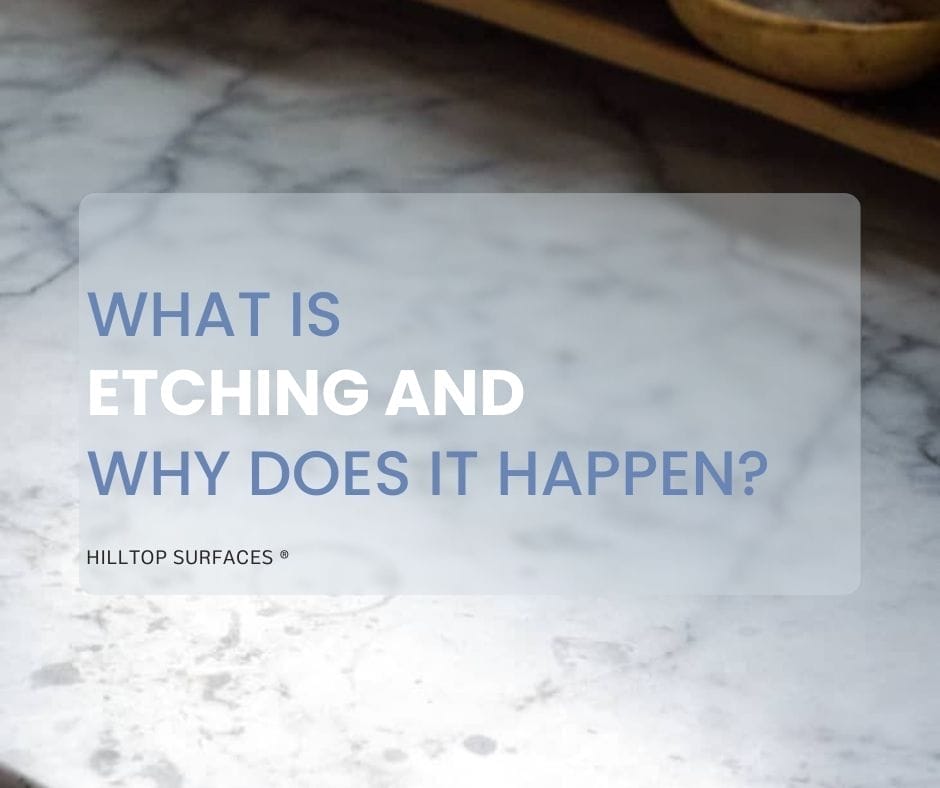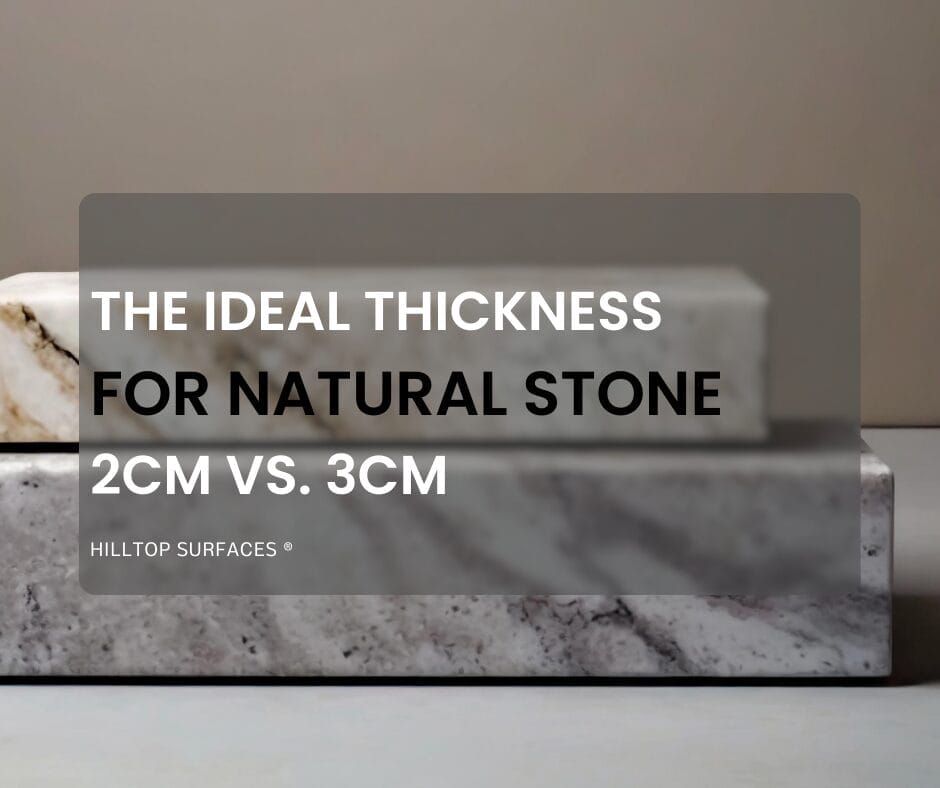There are many benefits of choosing natural stone for your kitchen or Bathroom Countertop; however, whether it be granite, marble, or another natural stone option, they all require proper care and maintenance to avoid damage. One of the most common damage we see on Countertops is etching. But what is etching? Why does it happen? , and How can you prevent it? This blog post explores the essence of etching, diving into why it occurs, how it can impact the beauty and longevity of various materials, particularly in kitchen and bathroom environments, and how to prevent it.
What is Etching?
Etching is a surface effect that appears as dull marks or subtle corrosion, often visible on Natural Stone surfaces such as marble, limestone, and certain granites. Unlike stains that color the surface from spills, etching is a physical change in the material’s finish, resulting from a chemical reaction. This reaction is typically between acidic substances and the calcium carbonate in marble or limestone, leading to a loss of polish or alteration in the material’s texture.

What is Etching?
Why Does Etching Occur?
The primary culprit behind etching is the exposure of vulnerable surfaces to acidic substances. Common household items, including lemon juice, vinegar, wine, and even some cleaning agents, can initiate this chemical reaction. The degree of etching can vary, influenced by the duration of exposure and the acidity level. Natural Stones like marble are particularly prone to etching due to their calcareous composition, which reacts readily with acids, whereas engineered stones like quartz exhibit greater resistance due to their nonporous nature.

Etch on a Marble Countertop
The likelihood of etching is a consideration that weighs heavily in the selection of Materials for Countertops, flooring, and other surfaces in the home. Understanding which materials are susceptible and under what conditions etching occurs is key to making informed decisions. For instance, choosing a material with inherent resistance to acid, such as Quartz, can mitigate the risk of etching in spaces where acidic spills are more likely.
How to Prevent Etching
Preventing etching involves carefully matching the material and the space where it will be installed, as well as adopting proactive maintenance practices. For natural stone surfaces prone to etching, using coasters, cutting boards, and wiping spills promptly reduces exposure to problematic substances. Additionally, sealing susceptible stones may offer a barrier, though it cannot prevent etching entirely. The choice of cleaning products is also vital; pH-neutral cleaners are recommended to avoid contributing to the risk of etching.
Final Thoughts
Etching represents a challenge to the pristine appearance and integrity of stone surfaces, particularly those of Natural Stone. Armed with an understanding of its causes and preventive measures, you can navigate this challenge, ensuring your chosen surfaces remain as vibrant and functional as intended. Whether opting for materials with natural resistance or employing careful maintenance strategies, the battle against etching is well within reach, allowing the beauty of stone surfaces to endure through the years.












